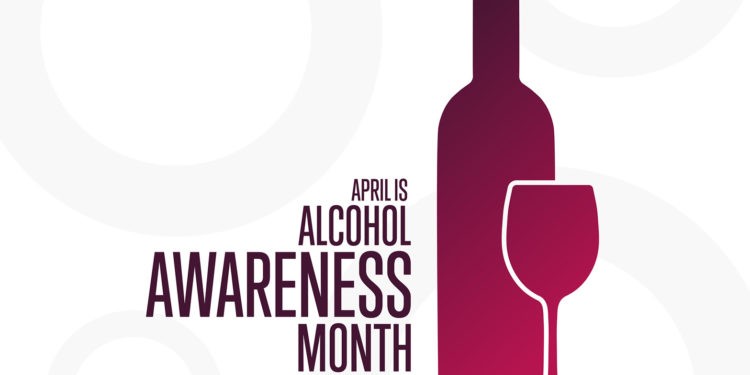The #1 Public Health Problem

Written by Ann E. Butenas
The most abused substance in the United States, alcohol is the third-leading cause of death. However, it is preventable.
The statistics are frightening, yet eye-opening: an estimated 95,000 people die each year from alcohol-related causes. That translates to approximately 68,000 men and 27,000 women. To take it a step further, one in five deaths in the United States in adults ages 20 to 49 is from excessive drinking. Widespread use of alcohol in our country is a significant problem. It impacts our lives in countless ways. And when it comes to alcohol use and abuse, prevention is equally important as treatment. Having discussions about alcohol with your children and grandchildren is critical. We need to raise awareness about the dangers of underage drinking and binge drinking.
In fact, when it comes to underage drinking, the Centers for Disease Control and Prevention (CDC) reports that “excessive drinking is responsible for more than 3,900 deaths and 225,000 years of potential life lost among people under the age of 21 each year.” Those are just not acceptable numbers.
Recognizing the signs of alcohol abuse
Even though alcohol is a legal drug in the United States, it is still highly addictive. The signs and symptoms of alcohol abuse, as noted by the American Addiction Centers, may include the following:
- Slurred speech
- Impaired thinking
- Impaired memory
- Poor coordination
- Inability to stop drinking despite the desire to quit
- Drinking secretly to avoid the abuse being recognized by others
- Taking part in risky behavior, such as driving while drunk
- Denying there is a problem with drinking
- Displaying stress or anxiety when there is no access to alcohol
Individuals most at risk for alcohol abuse include those who have a history of childhood trauma, who began drinking at a young age, or have a family history of alcohol abuse.

How alcohol abuse affects one’s health
When someone abuses alcohol, it can have negative consequences upon their health. Excessive use of alcohol can trigger stroke, cancer, heart disease, and high blood pressure. Excessive drinking can adversely affect the liver and pancreas, as well.
From a social perspective, someone who abuses alcohol may shy away from family and friends. This may cause rifts in relationships. Further, alcohol abuse can affect one’s career due to missed workdays because of hangovers and the inability to make solid decisions.
While alcohol may make one feel relaxed and calm at first, excessive use can alter one’s brain chemistry. It can lead to feelings of anger, irritability, anxiety, and depression. It may even cause one to have suicidal thoughts. Those who abuse alcohol may often fail to get their nutritional needs met, as well, which can result in issues with hair, nails, skin, and the eyes.
Dangers of binge drinking
No matter one’s age, binge drinking is a deadly form of alcohol abuse. While most people may associate binge drinking with college frat parties, sororities, and sports teams, it can affect any age demographic and social situation. The CDC reports that more than half of binge drinking events correspond to those over the age of 35.
Binge drinking is categorized as drinking to the point where one’s blood alcohol level reaches .08% or above. This equates to five glasses of beer for men and four for women in a two-hour time span. Binge drinking is extremely dangerous and can lead to serious health complications. It also comes with potential legal consequences and can lead to alcoholism.
The main signs of binge drinking may include the following:
- Poor motion control and judgment. This can lead to injury. Heavy drinking can lead to one losing control of themselves, leading to risky behaviors.
- Violent behavior. The National Institute on Alcohol Abuse and Alcoholism issued a report that nearly 42% of all violent crimes that required police involvement were related to alcohol.
- Financial ruin. Binge drinking is expensive. For college students, this may translate to decreased funds to pay for tuition, books, food, and housing. For those beyond college, this could mean the inability to pay one’s daily bills.
- Impaired brain development. If alcohol is consumed when one’s brain is still developing, it can adversely impact its growth. This can lead to poor memory, cognitive issues, a drop in overall IQ, and it can impact one’s learning abilities and social skills. Because brain development continues to around 25 years of age, college students who engage in this behavior are at extreme risk for these potential adverse consequences if they continue to binge drink.
While there are still other adverse consequences of binge drinking, one of the most concerning is alcohol poisoning. With too much alcohol in one’s system, it can become poison within the body. This requires immediate medical attention. Signs of alcohol poisoning include severe confusion, vomiting, seizures, and loss of consciousness.
Binge drinking is not to be taken lightly and can lead to some pretty serious consequences. If you or someone you know may be suffering from this problem, it is important to seek medical help immediately.

Give it a try and go dry
As part of Alcohol Awareness Month, make it a point to enjoy an alcohol-free weekend during the month of April. When you abstain from alcohol from Friday through Monday, you can determine how those days without consuming alcohol have impacted you. Be advised that if your body has become dependent upon alcohol, you may have headaches, difficulties with sleeping, and may even feel nauseated. If going 72 hours without a drink is a challenge, this could be a red flag, and your use of alcohol should be further examined. If you struggle during these dry weekends, it is important to speak with your health care provider to further understand alcoholism and available treatment options. Your health care provider should take those concerns seriously.
This month of awareness is designed to help reduce the shame and stigma associated with those who struggle with the abuse of alcohol. It is also designed to create better access to treatment and recovery, making help and resources available to all of those who struggle with this disease.






